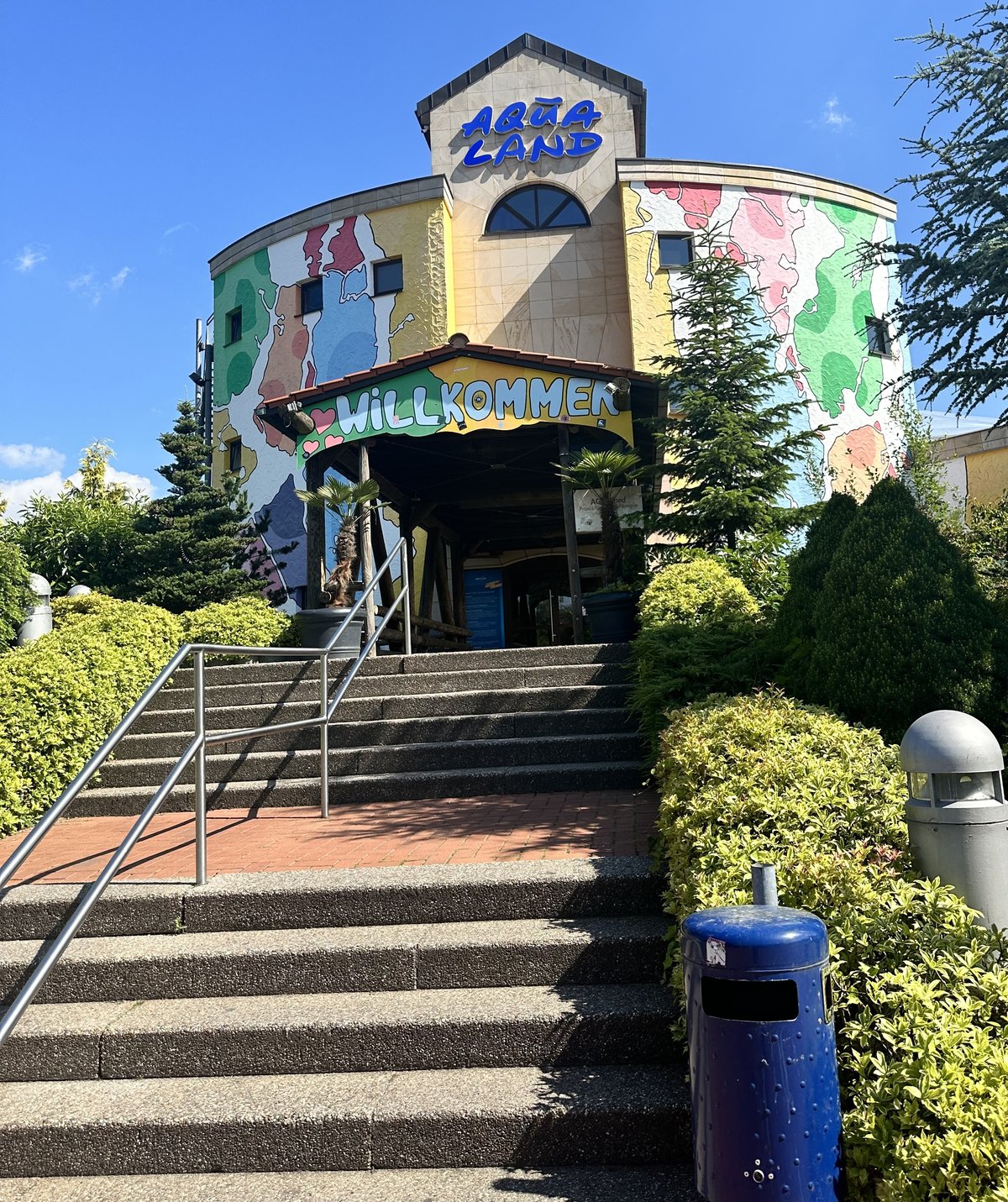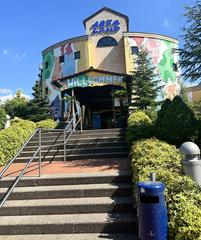
Chorweiler Cologne Germany: Visiting Hours, Tickets, and Historical Sites Guide
Date: 15/06/2025
Introduction: Chorweiler’s Historical Significance and Visitor Experience
On the northern edge of Cologne, Chorweiler presents a compelling destination for those interested in modern urban development, multicultural vibrancy, and accessible green spaces. Conceived in the 1960s and 1970s as a “new city” to tackle postwar housing shortages, Chorweiler is defined by its bold brutalist architecture, sprawling parks like Fühlinger See, and a diverse population representing over 100 countries. This guide provides a comprehensive overview of Chorweiler’s evolution, architectural and cultural highlights, practical visitor information, and tips for making the most of your visit.
Reflecting Germany’s postwar optimism, Chorweiler’s urban planning features high-rise residential complexes, wide pedestrian zones, and community-focused shopping centers such as City-Center Chorweiler (Koeln Magazin, Cologne Tourism Magazine). The borough’s multiculturalism is celebrated through local markets, international eateries, and events like the Chorweiler District Festival and Neighbourhood Day (Chorweiler Sozialraumkoordination). Excellent public transport connections ensure easy access to and within the district.
Whether you are a fan of architecture, culture, or nature, this guide will help you navigate Chorweiler’s attractions, visiting hours, accessibility, and more. For up-to-date information and audio tours, resources such as the Bürgerzentrum Chorweiler and the Audiala app are recommended. Chorweiler offers an alternative Cologne experience, harmonizing history, diversity, and community (citypopulation.de, Spotted by Locals).
Contents
- Chorweiler Overview: History, Urban Development, and Cultural Identity
- Key Attractions and What to See
- Practical Visiting Information: Hours, Tickets, and Accessibility
- Getting There and Getting Around
- Neighborhoods and Multicultural Life
- Practical Tips for Visitors
- Frequently Asked Questions (FAQ)
- Nearby Cologne Attractions
- Summary and Encouragement to Explore More
- References and Further Reading
Chorweiler Overview: History, Urban Development, and Cultural Identity
Historical Roots and Urban Development
Chorweiler’s origins lie in a collection of villages and marshy lands, with the name derived from Chorbusch and Weiler. Officially integrated into Cologne in 1922, Chorweiler emerged as a borough in the 1970s during a postwar urban expansion aimed at solving acute housing shortages. Designed for up to 100,000 residents, Chorweiler became a showcase of modern social housing, green planning, and community infrastructure.
Initially envisioned as a utopian “new city,” the borough’s evolution reflects both the ambitions and the challenges of modern urban planning. Today, Chorweiler stands as a living example of resilience and adaptation (Koeln Magazin).
Urban Planning and Architectural Identity
Chorweiler is renowned for its brutalist high-rises and geometric forms, with landmark projects like City-Center Chorweiler. The borough’s layout emphasizes wide pedestrian areas and integrated green spaces, creating an environment that balances density with open, communal areas (Cologne Tourism Magazine).
Multiculturalism and Social Fabric
The district’s affordable housing attracted residents from across the globe, building a community of over 100 nationalities. Chorweiler’s multicultural energy is evident in its markets, restaurants, community festivals, and grassroots initiatives aimed at integration and cohesion (Chorweiler Sozialraumkoordination).
Key Attractions and What to See
- Fühlinger See: A scenic lake for swimming, rowing, picnics, and nature walks.
- City-Center Chorweiler: A large shopping mall and community hub, notable for its 1970s architecture.
- Aqualand: An indoor water park and spa, popular with families.
- Central Plazas (Pariser Platz, Liverpooler Platz): Recently revitalized spaces ideal for people-watching, events, and photography.
- High-Rise Complexes: Notable for their striking postwar design and urban planning ethos.
- Community Gardens and Parks: Offer opportunities for relaxation and a glimpse of local life.
Practical Visiting Information
Visiting Hours & Tickets
- Public Parks, Fühlinger See: Open year-round, free access.
- City-Center Chorweiler: Open daily, typically 10:00 AM – 8:00 PM.
- Aqualand: Check the official website for current hours and ticket prices; advance booking is suggested.
- Markets: Central square market runs on Saturdays, early morning to mid-afternoon.
Accessibility
- Public Transport: Served by Stadtbahn lines 12 and 15, S-Bahn lines S11 and S12, and regional trains. Main stations: Köln-Chorweiler and Köln-Worringen.
- Mobility: The district is flat and has accessible infrastructure, including elevators and accessible restrooms at key public sites.
- Parking: Available at City-Center Chorweiler and public lots.
Guided Tours and Events
- Walking Tours: Occasional guided walks on urban development and multicultural life are organized by local groups (Chorweiler Sozialraumkoordination).
- Festivals: Chorweiler District Festival (June), Neighbourhood Day, and ChorweilerART exhibitions.
Best Time to Visit
- Spring to early autumn is ideal for outdoor exploration and events. Saturdays are lively due to the market.
Getting There and Getting Around
- From Cologne City Center: Direct Stadtbahn (lines 12, 15) or S-Bahn (S11, S12); journey time: 20–30 minutes.
- By Car: Via Bundesautobahn 57; parking at City-Center Chorweiler.
- Biking: The district is bike-friendly, with rental options available.
Neighborhoods and Multicultural Life
Chorweiler comprises twelve neighborhoods, each with its personality—Blumenberg, Esch/Auweiler, and Worringen are notable examples. The area’s diversity is reflected in its languages, cuisines, and community activities. Local initiatives and community centers foster integration and participation, making Chorweiler a model of urban multiculturalism.
Practical Tips for Visitors
- Accommodation: Budget hotels and guesthouses are available; booking ahead is advised during event periods.
- Safety: Chorweiler is generally safe and family-friendly; standard urban caution applies, especially after dark.
- Etiquette: Respect the district’s diversity; polite interaction is welcomed.
- Cash: Some vendors (especially market stalls) may not accept cards.
- Photography: The contrast of modernist architecture and green spaces offers excellent photo opportunities.
Frequently Asked Questions (FAQ)
Q: Are Chorweiler’s parks and lakes free to enter?
A: Yes, most green spaces, including Fühlinger See, are free.
Q: How do I reach Chorweiler from the city center?
A: Stadtbahn lines 12 or 15, or S-Bahn lines S11/S12, will get you there in about 20–30 minutes.
Q: Is Chorweiler accessible for those with disabilities?
A: Yes, key stations and public facilities are equipped for accessibility needs.
Q: Are guided tours available?
A: Local organizations occasionally offer tours; check the Bürgerzentrum Chorweiler for schedules.
Q: When is the market open?
A: Saturdays, from early morning to mid-afternoon at the central square.
Nearby Cologne Attractions
- Cologne Cathedral (Kölner Dom): Iconic Gothic landmark and UNESCO site.
Summary and Encouragement to Explore More
Chorweiler stands as a living testament to Cologne’s postwar ambitions and the dynamic multiculturalism shaping urban Germany. From its origins as a visionary “new city,” Chorweiler now offers a blend of striking architecture, expansive green spaces, diverse communities, and vibrant events. The district’s accessibility, affordable attractions, and welcoming spirit make it an ideal destination for curious travelers seeking a deeper understanding of Cologne beyond its old town.
To enrich your visit, use digital tools like the Audiala app for guided tours, keep an eye on community event schedules, and engage with locals to experience Chorweiler’s authentic character. Embrace the opportunity to discover a unique side of Cologne and contribute to the ongoing story of this remarkable urban community (Chorweiler Sozialraumkoordination, Cologne Tourism Magazine).
References and Further Reading
- Visiting Chorweiler: A Guide to Cologne’s Unique Borough with Rich History and Green Spaces, 2025, Cologne Tourism (Cologne Tourism Magazine)
- Exploring Chorweiler: Visiting Hours, Cultural Highlights & Urban Planning in Cologne’s Historic District, 2025, Koeln Magazin (Koeln Magazin)
- Chorweiler Sozialraumkoordination, 2025, City of Cologne (Chorweiler Sozialraumkoordination)
- Discover Chorweiler: A Visitor’s Guide to Cologne’s Unique Urban District, 2025, Citypopulation.de (citypopulation.de)
- Spotted by Locals: Le’zzet Café and Chorweiler Insights, 2025 (Spotted by Locals)
- Urban Transformation Conference 2025, Karlsruhe Institute of Technology (Urban Transformation Conference 2025)






































































